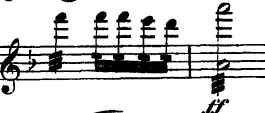Whether it is tremolo or not depends on the tempo. I mean how fast is the quarter notes? If the tempo is slow then you can play the 32nd notes exactly as 32nd notes. If the tempo is fast then it is tremolo.
A usual way to notate tremolo is to make the note values so fast in the relation to the tempo that it is obvious the composer wants tremolo. Thus if the tempo is slow the composer would write 64th notes in order to make sure that a tremolo is played, but if the tempo is fast the composer writes 32nd notes. Sometimes the composer writes the word "tremolo" if it is not clear from the tempo and he does want tremolo. But often it is not necessary. The composer can also indicate if he wants it exactly metered.
The triplets are supposed to be played exact, 3 notes on each quarter note, otherwise it would make no sense to write triplets. Note that the number 3 is tilted. Tilted numbers are standard for tuplets. If it was about fingering they should not be tilted.
¤¤¤¤¤¤¤¤¤¤¤¤¤¤¤¤¤¤¤¤
EDIT This edit is written a couple of days after the above answer was written:
@ivo posted a comment below and that calls for an elaboration on how to fully understand that type of notation. This is his comment:
Many thanks for your instructive answer. I still have a problem when it comes to playing the tremolo. On the first picture given the 4 notes in the second beat do you play them as tremolo (if the tempo permits) one after the other and then return and play again one after the other and so on for the duration of one quarter note, or you play each of them individually as tremolo for the duration of 1/16th each ? Thanks again.
Instead of trying to explain it with words I think an image will tell you much better how to actually interprete this kind of notation:




